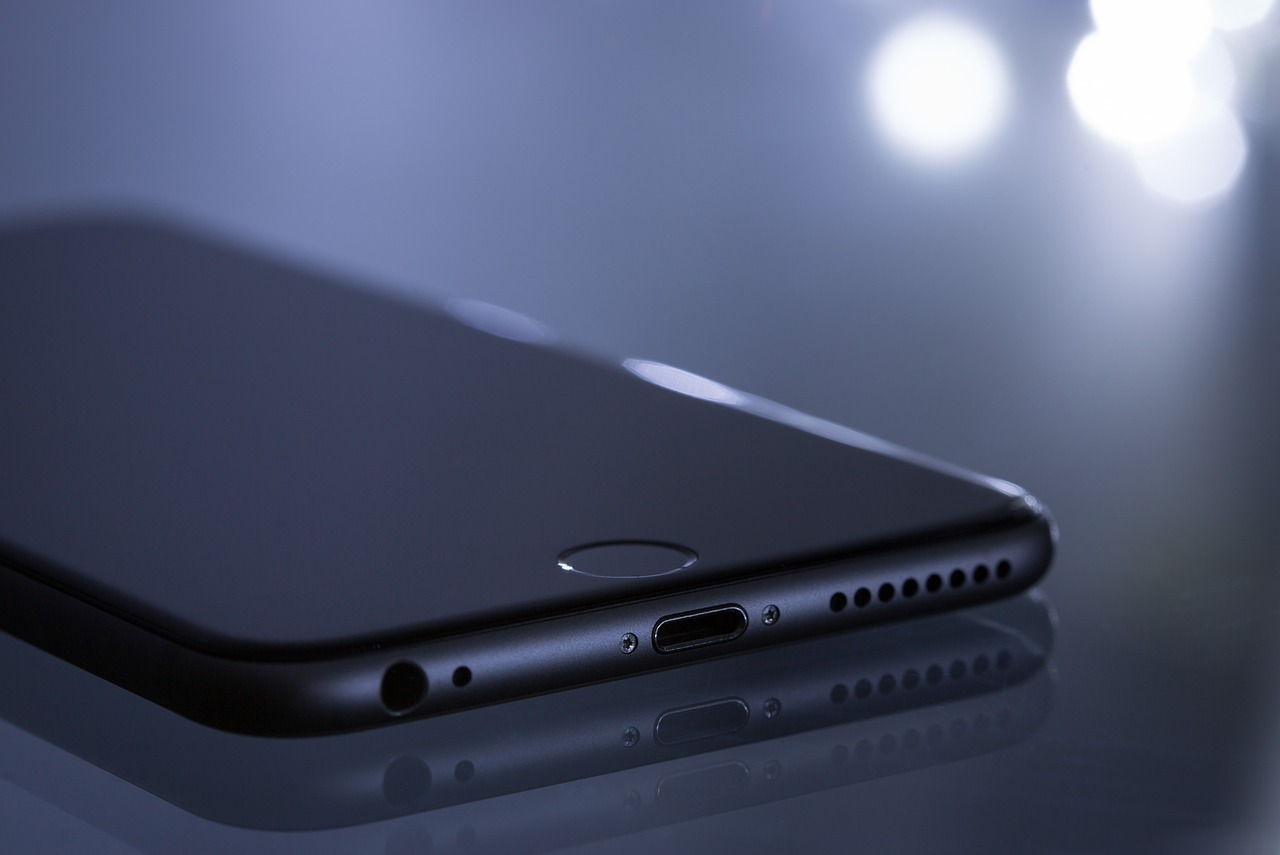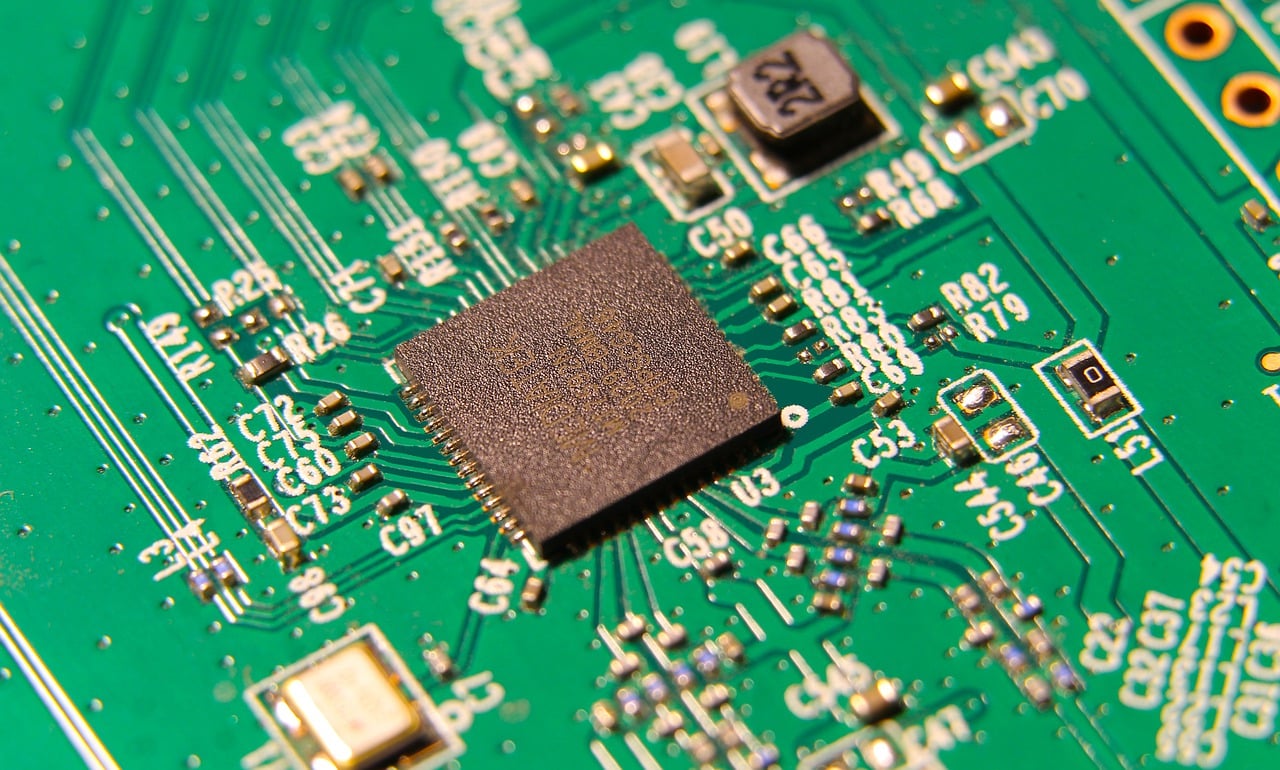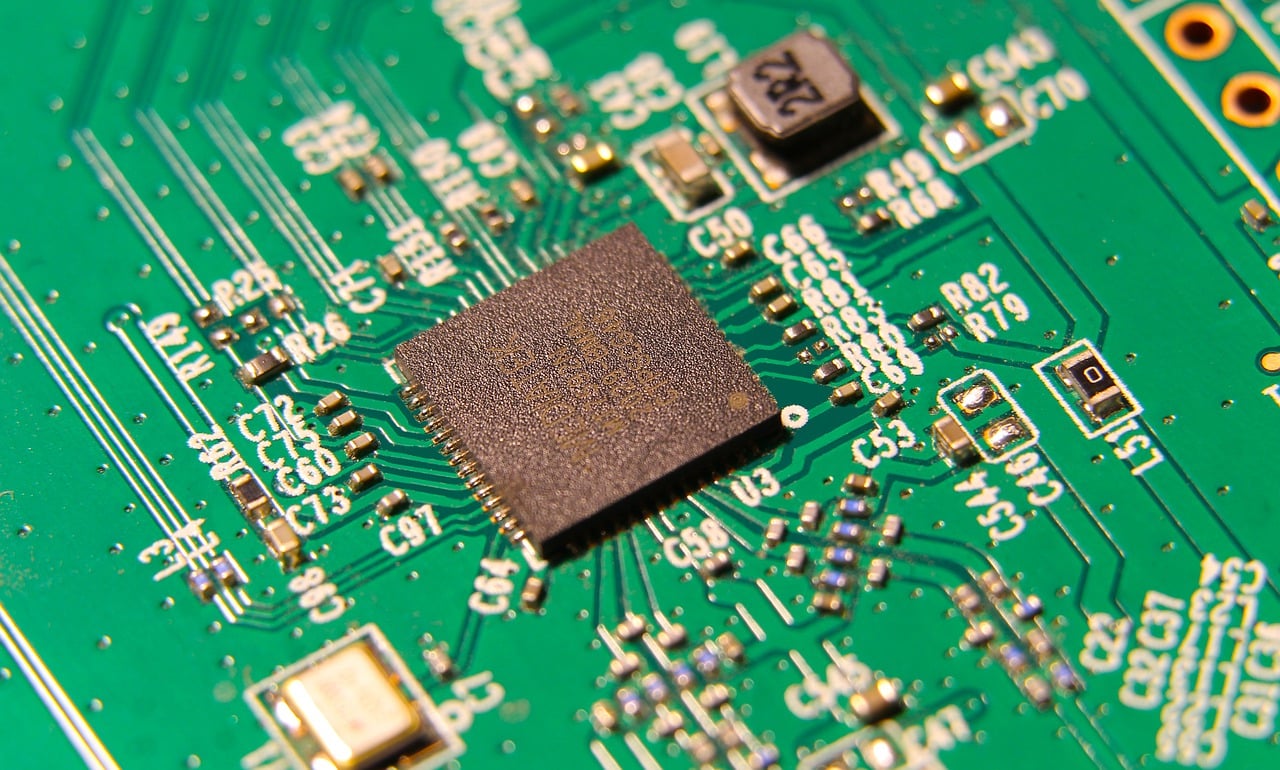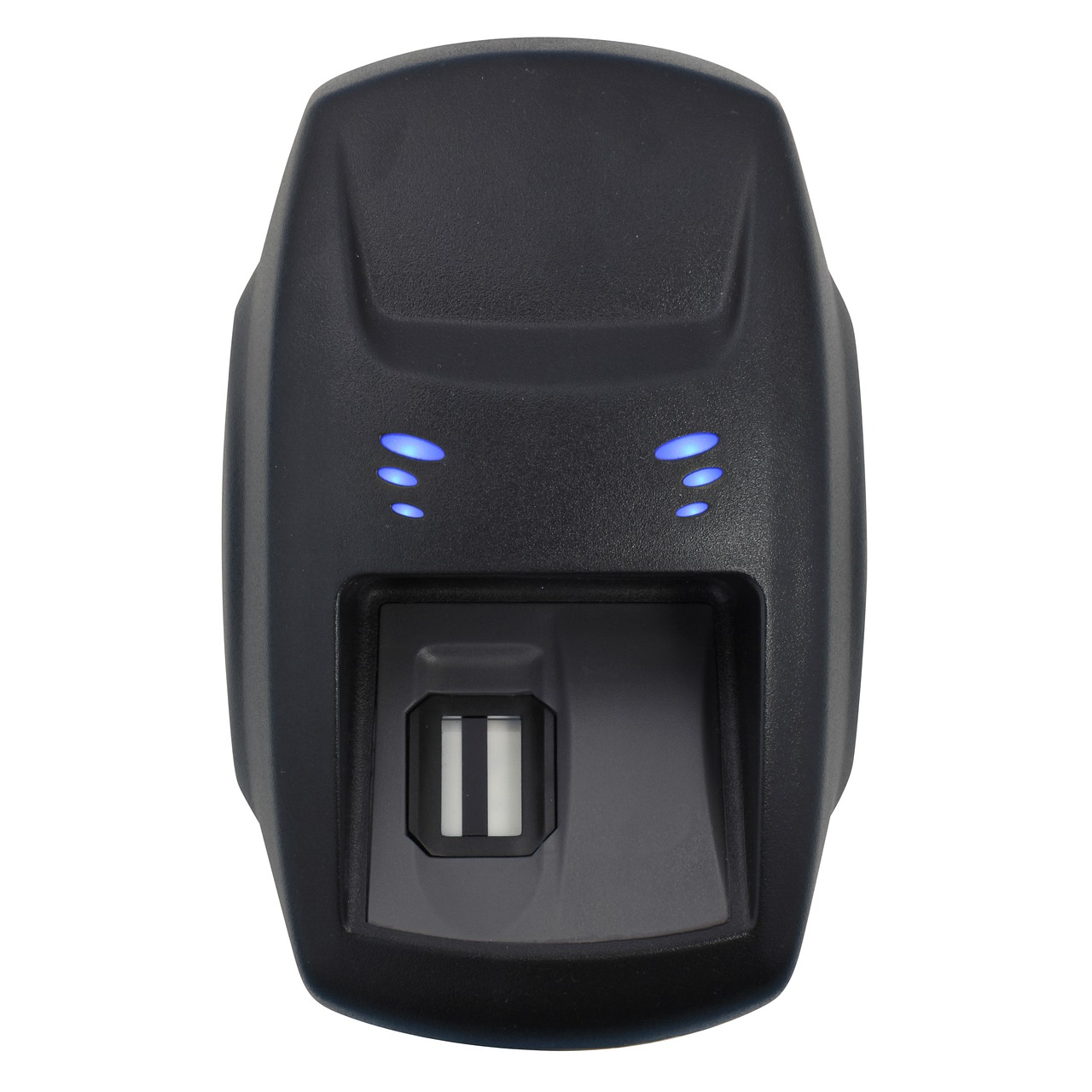Exploring Biometric Technologies in Military Access Control
In an era where security is paramount, the military is increasingly turning to biometric technologies to fortify access control measures. Biometric systems not only enhance security but also streamline processes, ensuring that only authorized personnel can access sensitive areas. Imagine a world where traditional keys and passwords are obsolete, replaced by the unique identifiers of individuals—like their fingerprints, faces, or even voices. This shift is not just a trend; it’s a necessity in a landscape where threats are evolving at an alarming pace.
The integration of biometric technologies into military operations represents a significant leap forward. Imagine a soldier entering a secure facility without fumbling for a card or remembering a password. Instead, they simply walk up to a scanner that recognizes them instantly. This not only saves time but also reduces human error, which can be critical in high-stakes environments. The efficiency of biometric systems can lead to faster decision-making and improved operational readiness, making them invaluable in today's military landscape.
However, the journey to implementing these advanced technologies is not without its challenges. There are technical hurdles to overcome, such as ensuring compatibility with existing systems and managing the vast amounts of data generated. Moreover, the potential for spoofing and other security breaches must be addressed to maintain trust in these systems. Despite these challenges, the benefits of adopting biometric technologies far outweigh the risks, paving the way for a more secure future in military access control.
As we dive deeper into the various types of biometric technologies used in military settings, it’s essential to understand their unique advantages and limitations. From fingerprint recognition to facial recognition, each technology offers distinct features that cater to different operational needs. The choice of technology will depend on specific requirements, including the level of security needed, the environment in which it will be used, and the resources available for implementation.
In the following sections, we will explore the importance of biometric security in military access control, the different types of biometric technologies available, and how these systems are integrated into existing frameworks. We will also look ahead to the future trends in biometric technologies, including advancements in artificial intelligence and emerging biometric modalities. By the end of this exploration, you’ll have a comprehensive understanding of how biometric technologies are shaping the future of military security.
Biometric security plays a crucial role in military access control by providing enhanced protection against unauthorized access. Imagine the implications of a security breach in a military facility—sensitive information could be compromised, and lives could be endangered. Biometric systems ensure that only verified personnel can enter sensitive areas, making it a formidable barrier against potential threats.
- What are biometric technologies? Biometric technologies are systems that use unique physical characteristics of individuals, such as fingerprints, facial features, or iris patterns, for identification and authentication.
- How do biometric systems enhance security? By ensuring that only authorized personnel can access sensitive areas, biometric systems significantly reduce the risk of unauthorized access and potential security breaches.
- What are the challenges of implementing biometric technologies? Challenges include compatibility with existing systems, the need for infrastructure upgrades, and addressing potential vulnerabilities like spoofing.
- What is the future of biometric technologies in the military? The future looks promising with advancements in AI and machine learning, leading to more sophisticated and accurate biometric systems.

The Importance of Biometric Security
In today's world, where security threats are evolving at an alarming rate, biometric security has emerged as a vital component of military access control. The military operates in sensitive environments where the stakes are incredibly high, and unauthorized access can lead to catastrophic consequences. Imagine a scenario where an intruder gains access to a secure base; the implications could be dire, affecting not just personnel but national security as a whole. This is why ensuring that only verified personnel can enter restricted areas is of utmost importance.
Biometric security systems utilize unique biological traits, such as fingerprints, facial features, and iris patterns, to authenticate individuals. Unlike traditional security methods, such as passwords or ID cards, biometrics offer a higher level of accuracy. These systems are less prone to human error and can significantly reduce the risk of unauthorized access. For instance, consider a fingerprint scanner; it works by analyzing the unique patterns of ridges and valleys on a person's finger, making it nearly impossible to replicate. This inherent uniqueness provides a robust layer of security.
Moreover, biometric technologies enhance operational efficiency. In a military setting, time is often of the essence. Traditional access control measures can be slow and cumbersome, causing delays in critical operations. By implementing biometric systems, military personnel can gain access quickly and efficiently, allowing them to focus on their primary tasks rather than being bogged down by tedious security procedures. This seamless integration of security and efficiency is crucial for maintaining operational readiness.
However, it's essential to recognize that while biometric security offers significant advantages, it is not without its challenges. The technology must be implemented with care, taking into account factors such as environmental conditions and the potential for system failures. For example, extreme weather conditions can affect the performance of certain biometric systems, leading to false rejections or security breaches. Therefore, military organizations must continuously evaluate and update their biometric systems to ensure they remain effective.
In conclusion, the importance of biometric security in military access control cannot be overstated. It not only enhances security by ensuring that only authorized personnel can access sensitive areas but also improves operational efficiency. As military operations become more complex, the need for reliable and advanced security measures will only grow. By leveraging biometric technologies, the military can safeguard its personnel and assets while maintaining a high level of readiness.
- What are biometric technologies? Biometric technologies are methods of identifying individuals based on unique biological traits, such as fingerprints, facial recognition, and iris scans.
- How do biometric systems enhance security? They provide a higher level of accuracy and reduce the risk of unauthorized access compared to traditional security measures.
- What challenges do biometric systems face? Challenges include environmental factors that can affect performance and the need for continuous system updates to ensure reliability.
- Are biometric systems cost-effective? While the initial investment may be higher, the long-term benefits of enhanced security and efficiency often outweigh the costs.

Types of Biometric Technologies
In the realm of military access control, biometric technologies have emerged as a game-changer, offering a range of methods to verify identities with unparalleled precision. These technologies leverage unique biological traits, ensuring that only authorized personnel gain access to sensitive areas. Let's dive into some of the most prominent types of biometric technologies currently utilized in military settings, each bringing its own set of advantages and challenges.
One of the most recognized forms of biometric identification is fingerprint recognition. This technology analyzes the unique patterns found on an individual's fingertips, making it one of the most reliable methods for identity verification. The ease of use and quick processing times make fingerprint systems a popular choice in various military applications. However, they are not without their limitations, as wear and tear on scanners can affect performance over time.
Another significant player in the biometric arena is facial recognition technology. This innovative system employs advanced algorithms to examine and compare facial features against a database of known individuals. Its non-intrusive nature allows for quick identification without requiring physical contact, which is particularly advantageous in high-security environments. Nonetheless, the effectiveness of facial recognition can be influenced by factors such as lighting conditions and the angle of the face being scanned.
Iris scanning is yet another cutting-edge biometric technology. By analyzing the unique patterns in the colored part of the eye, iris scanners provide a high level of accuracy. This method is particularly useful in situations where other biometric systems might struggle, such as with individuals who have worn fingerprints or faces that are difficult to capture. However, the cost of implementing iris scanning systems can be a barrier for some military operations.
Lastly, voice recognition technology offers a unique approach to biometric identification by analyzing vocal characteristics. This method can be particularly useful in scenarios where personnel might be wearing masks or other gear that obscures their faces. While voice recognition systems can be highly effective, they may also face challenges such as background noise and variations in an individual's voice due to stress or illness.
To summarize, the various types of biometric technologies each present their own strengths and weaknesses:
| Biometric Technology | Advantages | Challenges |
|---|---|---|
| Fingerprint Recognition | Cost-effective, quick implementation, reliable | Wear and tear, vulnerability to spoofing |
| Facial Recognition | Non-intrusive, fast identification | Lighting and angle sensitivity |
| Iris Scanning | High accuracy, effective with worn fingerprints | Higher implementation costs |
| Voice Recognition | Useful in masked scenarios, easy to use | Background noise interference, voice variability |
As military operations continue to evolve, the integration of these biometric technologies will play a crucial role in enhancing security measures and ensuring that only authorized personnel can access sensitive areas. The future looks bright for biometric identification, with ongoing advancements likely to address current challenges and improve overall effectiveness.
- What is biometric technology? Biometric technology refers to methods that use unique biological traits for identification, such as fingerprints, facial features, iris patterns, and voice characteristics.
- How does fingerprint recognition work? Fingerprint recognition analyzes the unique patterns on an individual's fingertips and compares them to stored data to verify identity.
- What are the limitations of facial recognition technology? Facial recognition can be affected by lighting conditions, angles, and the presence of obstructions such as masks.
- Is iris scanning more accurate than fingerprint recognition? Iris scanning is often considered more accurate due to the unique patterns in the iris, but it can be more expensive to implement.
- Can voice recognition be used in noisy environments? Voice recognition systems may struggle in noisy environments, but advancements are being made to improve their effectiveness in such conditions.

Fingerprint Recognition
Fingerprint recognition stands out as one of the most widely adopted biometric technologies, especially in military settings where security is paramount. The process involves scanning an individual's fingerprint and comparing it to a stored database to verify identity. This method is not only highly accurate but also user-friendly, making it a go-to choice for military access control systems. Imagine walking up to a secure facility, placing your finger on a scanner, and gaining instant access – it's like having a personal key that is uniquely yours!
One of the key advantages of fingerprint recognition is its cost-effectiveness. Compared to other biometric systems, fingerprint scanners are relatively inexpensive to implement and maintain. This affordability allows military organizations to deploy these systems across various facilities without breaking the bank. Additionally, the speed of fingerprint recognition is impressive; it typically takes just a few seconds to verify an individual's identity, making it ideal for high-traffic areas where quick access is essential.
However, like any technology, fingerprint recognition isn't without its challenges. For instance, fingerprint scanners can suffer from wear and tear, especially in harsh environments commonly found in military operations. Dust, moisture, and physical damage can hinder the scanner's performance, leading to errors in identification. Moreover, there are concerns regarding spoofing attacks, where unauthorized individuals attempt to replicate fingerprints using molds or other techniques. Thus, while fingerprint recognition is reliable, it is essential to combine it with other security measures to bolster overall safety.
To address these challenges, some military installations are implementing advanced fingerprint recognition systems that incorporate additional security features. For example, many modern systems now use multi-factor authentication, requiring users to provide more than just a fingerprint for access. This could include a PIN code or another biometric trait, such as facial recognition, creating a layered defense that significantly enhances security.
In summary, fingerprint recognition is a cornerstone of biometric access control in military environments. Its balance of accuracy, speed, and cost-effectiveness makes it an attractive option, while ongoing advancements aim to mitigate its limitations. As we continue to explore the potential of biometric technologies, fingerprint recognition will likely remain a key player in ensuring that military personnel can operate securely and efficiently.
- What are the main advantages of fingerprint recognition technology?
The main advantages include high accuracy, quick verification times, and cost-effectiveness, making it suitable for military applications.
- Are fingerprint scanners vulnerable to attacks?
Yes, fingerprint scanners can be vulnerable to spoofing attacks, but integrating additional security measures can help mitigate these risks.
- How does fingerprint recognition compare to other biometric methods?
Fingerprint recognition is often more affordable and easier to implement than other methods like iris scanning or facial recognition, which may require more complex technology.

Advantages of Fingerprint Systems
Fingerprint systems have become a cornerstone in the realm of biometric technologies, especially within military access control. One of the most significant advantages of these systems is their cost-effectiveness. Compared to other biometric technologies, fingerprint scanners are generally more affordable to implement and maintain. This makes them an attractive option for military organizations that often operate under tight budgets.
Moreover, fingerprint recognition offers a quick and efficient authentication process. In high-pressure environments like military bases, the ability to swiftly verify personnel can be crucial. Fingerprint systems typically require only a matter of seconds to scan and authenticate an individual, allowing for rapid access to sensitive areas without compromising security.
Another noteworthy advantage is the high accuracy associated with fingerprint recognition. Unlike passwords or ID cards, which can be lost, forgotten, or stolen, fingerprints are unique to each individual. This uniqueness significantly reduces the risk of unauthorized access, ensuring that only verified personnel can enter secure zones. Additionally, advancements in technology have led to improved algorithms that enhance the accuracy of fingerprint matching, further bolstering security.
Fingerprint systems are also easy to use, requiring minimal training for personnel to operate. This user-friendliness is particularly beneficial in military settings, where time and efficiency are paramount. Personnel can quickly learn how to use the scanners, minimizing downtime and allowing for smooth operations.
Furthermore, these systems can be integrated with other security measures, creating a multi-layered approach to access control. For instance, fingerprint scanners can work alongside traditional ID checks or even facial recognition systems. This integration not only enhances security but also provides a comprehensive solution that addresses various potential vulnerabilities.
Lastly, fingerprint systems are scalable. As military operations grow or change, these systems can be expanded or modified to accommodate new personnel or security requirements without a complete overhaul of the existing infrastructure. This adaptability is essential in the dynamic environment of military operations.
- What are the main benefits of using fingerprint systems in military settings?
Fingerprint systems offer cost-effectiveness, quick authentication, high accuracy, ease of use, integration capabilities, and scalability. - Can fingerprint systems be spoofed?
While fingerprint systems are generally secure, they can be vulnerable to spoofing attacks using high-quality replicas. However, advancements in technology continue to improve their resistance to such threats. - How do fingerprint systems compare to other biometric technologies?
Fingerprint systems are often more affordable and easier to implement than technologies like iris scanning or facial recognition, making them a popular choice for military access control.

Limitations of Fingerprint Systems
While fingerprint recognition is heralded as one of the most reliable biometric technologies, it does come with its own set of limitations that must be acknowledged. One of the primary challenges is the wear and tear on fingerprint scanners. In military environments, where personnel often handle equipment and face harsh conditions, the scanners can degrade over time, leading to inaccurate readings or complete failures. Imagine trying to unlock a high-security door, only to find that the scanner won't recognize your fingerprint because it's worn down from repeated use. Frustrating, right?
Another significant concern is the potential for spoofing attacks. While fingerprint systems are designed to identify unique patterns, they can sometimes be tricked by fake fingerprints made from silicone or other materials. This vulnerability raises questions about the overall security of relying solely on fingerprint recognition. It's akin to having a lock on your front door that can be picked with a simple tool; it gives you a false sense of security.
Moreover, environmental factors can also impact the effectiveness of fingerprint systems. For instance, moisture, dirt, or even extreme temperatures can affect the scanner's ability to accurately read fingerprints. In a military setting, where personnel are exposed to various elements, this limitation can pose a risk. Think about it: if a soldier's hands are muddy or wet after a mission, they might struggle to gain access to critical areas, potentially delaying operations.
Another aspect to consider is the privacy concerns associated with biometric data. Collecting and storing fingerprints raises ethical questions about who has access to this sensitive information and how it is protected. If a database containing fingerprint data were to be compromised, it could lead to severe consequences, including identity theft and unauthorized access to secure areas. This is a risk that military organizations must weigh carefully.
Lastly, the cost of implementation and maintenance can be a barrier. While fingerprint systems are generally cost-effective compared to other biometric technologies, the initial investment for high-quality scanners and the ongoing costs for maintenance and updates can add up. In a budget-conscious military environment, these factors can influence the decision to adopt such technologies.
In summary, while fingerprint recognition offers numerous advantages for military access control, it's essential to be aware of its limitations. Addressing these challenges through ongoing research and development can help mitigate risks and enhance the overall effectiveness of biometric systems in military applications.
- What are the main vulnerabilities of fingerprint systems? Fingerprint systems can be vulnerable to wear and tear, spoofing attacks, environmental factors, privacy concerns, and high implementation costs.
- Can fingerprint scanners work in harsh conditions? While they can, extreme conditions like moisture, dirt, or temperature can affect their performance.
- What measures can be taken to enhance fingerprint system security? Regular maintenance, software updates, and integrating additional biometric technologies can improve security.
- Are there alternatives to fingerprint recognition? Yes, alternatives include facial recognition, iris scanning, and voice recognition, each with its own advantages and challenges.

Facial Recognition Technology
Facial recognition technology has rapidly become a cornerstone in military access control systems. It provides a non-intrusive method for identifying individuals, which is crucial in environments where security is paramount. By utilizing advanced algorithms, this technology analyzes facial features and matches them against stored data, allowing for swift and accurate identification. Imagine walking through a secure military checkpoint where your face is scanned and verified in mere seconds—this is the power of facial recognition!
One of the most significant advantages of facial recognition is its ability to operate without the need for physical contact. In a military context, this can be a game changer, especially in high-security areas where every second counts. The technology can function effectively in various lighting conditions and distances, making it adaptable to different environments. However, like any technology, it has its own set of challenges. For instance, variations in facial expressions, angles, and even aging can affect recognition accuracy.
Moreover, the integration of facial recognition with existing security systems can lead to enhanced operational efficiency. For example, when combined with real-time surveillance systems, it can alert personnel to unauthorized individuals almost instantaneously. This proactive approach not only improves security but also frees up human resources for other critical tasks. However, the implementation of such systems must also consider privacy concerns and ethical implications, as the collection and storage of biometric data raise questions about data protection and user consent.
Despite these challenges, the military's investment in facial recognition technology is expected to grow. With ongoing advancements in artificial intelligence and machine learning, the accuracy and reliability of these systems are set to improve dramatically. As algorithms evolve, we can anticipate a future where facial recognition becomes even more integral to military operations, enhancing both security and operational effectiveness.
- What is facial recognition technology? Facial recognition technology is a biometric system that identifies individuals by analyzing their facial features and comparing them to a database of stored images.
- How does facial recognition work? It works by capturing an image of a person's face, extracting key features, and matching them against a database to verify identity.
- What are the advantages of using facial recognition in the military? Advantages include non-intrusiveness, quick identification, adaptability to various environments, and enhanced security through real-time monitoring.
- What challenges does facial recognition face? Challenges include variations in lighting, angles, facial expressions, and concerns regarding privacy and data security.

Integration with Existing Systems
Integrating biometric technologies with existing military access control systems is not just a trend; it's becoming a necessity in today's security landscape. As military operations grow increasingly complex, the need for robust and effective security measures becomes paramount. The beauty of biometric technologies lies in their ability to enhance security while streamlining processes, creating a seamless experience for personnel. Imagine walking up to a secure facility, and instead of fumbling for an ID card or remembering a password, you simply glance at a camera or place your finger on a scanner. This is the future of military access control, where technology meets efficiency.
However, the journey toward integration is not without its challenges. One of the primary hurdles is the compatibility of new biometric systems with legacy systems currently in place. Many military installations rely on older technologies that may not easily interface with modern biometric solutions. This can lead to a fragmented security approach, where some areas are highly secure while others remain vulnerable due to outdated systems. To mitigate this, a thorough assessment of existing infrastructure is essential. The goal is to create a cohesive security environment where all systems work in harmony.
Moreover, significant infrastructure upgrades may be necessary to support the new technologies. This could involve physical changes to facilities, such as installing new scanners or upgrading network capabilities to handle increased data flow. The investment in these upgrades can be substantial, but the long-term benefits—enhanced security, reduced response times, and improved operational efficiency—often outweigh the initial costs.
Successful integration of biometric technologies can lead to a multitude of benefits, including:
- Improved Efficiency: Automated systems reduce the time personnel spend on access procedures, allowing them to focus on their primary duties.
- Enhanced Security: Biometric systems are difficult to forge, making unauthorized access significantly more challenging.
- Streamlined Processes: The transition from traditional methods to biometric systems can lead to smoother operations, as personnel adapt to a more intuitive security protocol.
In summary, the integration of biometric technologies into existing military access control systems is a vital step toward modernizing security measures. While challenges such as compatibility and infrastructure upgrades exist, the potential benefits make this integration not just advantageous but essential. As we move forward, embracing these technologies will undoubtedly enhance the security and efficiency of military operations.
Q1: What are the primary benefits of integrating biometric technologies with existing systems?
A1: The primary benefits include improved efficiency, enhanced security, and streamlined processes, leading to a more effective military operation.
Q2: Are there significant costs associated with upgrading to biometric systems?
A2: Yes, there can be substantial costs for infrastructure upgrades, but the long-term benefits often justify the investment.
Q3: How do biometric systems compare to traditional access control methods?
A3: Biometric systems offer a higher level of security as they are difficult to forge compared to traditional methods like ID cards or passwords.
Q4: What challenges might arise during the integration process?
A4: Challenges can include compatibility issues with legacy systems and the need for significant infrastructure upgrades.

Challenges of Integration
Integrating biometric technologies into existing military access control systems is not as straightforward as it may seem. While the benefits are clear, the road to seamless integration is fraught with obstacles that can hinder progress. One of the primary challenges is technical compatibility. Existing systems may not be designed to accommodate newer biometric solutions, leading to a need for extensive modifications or even complete overhauls of the current infrastructure. This can be both time-consuming and costly, requiring military organizations to allocate significant resources to ensure compatibility.
Additionally, there are security concerns that arise during integration. As new technologies are introduced, there is always the risk of vulnerabilities that can be exploited by malicious actors. For instance, integrating biometric systems with legacy systems can create potential entry points for cyberattacks, posing a serious threat to sensitive military data. Therefore, it is essential to conduct thorough risk assessments and implement robust security measures to protect against these threats.
Another challenge is the training and adaptation of personnel. Introducing new technology means that military staff must be educated on how to use these systems effectively. This not only includes understanding the technology itself but also adapting to new protocols and procedures that come with it. Resistance to change can be a significant barrier, as some personnel may be accustomed to traditional methods and hesitant to embrace new technologies. Comprehensive training programs must be developed to ease this transition and ensure that all users are comfortable and proficient with the new systems.
Finally, the cost implications cannot be overlooked. While biometric technologies can lead to long-term savings and efficiencies, the initial investment can be substantial. Budget constraints in military organizations often mean that funding must be carefully allocated, and the financial commitment required for integration can be a stumbling block. Decision-makers need to weigh the potential benefits against the costs, which can complicate the approval processes for new projects.
In summary, while the integration of biometric technologies into military access control systems holds great promise, it is essential to navigate the various challenges effectively. From technical compatibility and security concerns to personnel training and budget constraints, addressing these issues proactively can pave the way for a smoother transition and ultimately enhance the security and efficiency of military operations.
- What are the main challenges of integrating biometric technologies?
The main challenges include technical compatibility with existing systems, security concerns, the need for personnel training, and cost implications.
- How can military organizations address these challenges?
Organizations can conduct risk assessments, develop comprehensive training programs, and carefully evaluate budget allocations to address these challenges effectively.
- Are there any long-term benefits to integrating biometric technologies?
Yes, long-term benefits include enhanced security, improved operational efficiency, and potential cost savings over time.

Benefits of Integration
Integrating biometric technologies into military access control systems brings a multitude of benefits that can significantly enhance security and operational efficiency. One of the most notable advantages is the streamlined authentication process. By incorporating biometric data, military personnel can access secure areas swiftly without the need for traditional keys or access cards, which can be lost or stolen. Imagine a soldier walking up to a secure facility; with a simple scan of their fingerprint or a quick facial recognition check, they can gain entry almost instantaneously. This not only saves time but also reduces the chances of unauthorized access.
Moreover, integration leads to improved data accuracy. Biometric systems are designed to minimize human error, which is often a factor in traditional access control methods. For instance, when a soldier’s identity is verified through a biometric scan, the system eliminates the possibility of mistaken identity that could arise from manual checks. This level of precision is crucial in military operations where every second counts and the stakes are incredibly high.
Another significant benefit is the enhanced security posture. Biometric technologies are inherently more secure than traditional methods because they rely on unique physical characteristics. This makes it exceedingly difficult for an unauthorized individual to gain access, as they cannot simply replicate a fingerprint or facial feature. In fact, the integration of multiple biometric modalities can create a multi-layered security approach. For example, a system that requires both fingerprint and facial recognition can provide an additional layer of verification, making it even harder for potential intruders.
Furthermore, successful integration can lead to cost savings in the long run. While the initial setup of biometric systems may require significant investment, the reduction in administrative costs associated with managing lost or stolen access cards and the decreased need for physical security personnel can lead to substantial savings over time. This is particularly important for military organizations that must allocate resources efficiently.
Lastly, the integration of biometric systems promotes a culture of innovation and modernization within military operations. As technology continues to evolve, embracing these advancements can ensure that military forces remain at the forefront of security practices. This not only boosts morale among personnel who feel safer but also enhances the overall effectiveness of military operations.
The integration of biometric technologies into military access control systems offers a range of benefits, including:
- Streamlined authentication processes that save time and reduce unauthorized access.
- Improved data accuracy that minimizes human error.
- Enhanced security posture through unique biometric identifiers.
- Cost savings in the long run by reducing administrative overhead.
- Promotion of innovation and modernization within military operations.
- What are biometric technologies?
Biometric technologies are systems that identify individuals based on unique physical or behavioral characteristics, such as fingerprints, facial features, or voice patterns.
- How do biometric systems enhance security?
They enhance security by relying on unique traits that are difficult to replicate, thereby reducing the likelihood of unauthorized access.
- What challenges come with integrating biometric systems?
Challenges can include technical compatibility with existing systems, the need for infrastructure upgrades, and potential privacy concerns.
- Are biometric systems cost-effective?
While initial costs may be high, the long-term savings from reduced administrative tasks and improved security can justify the investment.

Future Trends in Biometric Technologies
This article delves into the advancements and applications of biometric technologies in military settings, examining their impact on access control, security, and operational efficiency.
Biometric security plays a crucial role in military access control by providing enhanced protection against unauthorized access, ensuring that only verified personnel can enter sensitive areas.
Various biometric technologies are employed in military access control, including fingerprint recognition, facial recognition, iris scanning, and voice recognition, each with unique advantages and challenges.
Fingerprint recognition is one of the most widely used biometric technologies, offering high accuracy and ease of use for verifying personnel identities in military environments.
Fingerprint systems are cost-effective, quick to implement, and provide reliable authentication, making them suitable for various military applications.
Despite their benefits, fingerprint systems can face challenges such as wear and tear on scanners and potential vulnerabilities to spoofing attacks.
Facial recognition technology offers a non-intrusive method for identifying individuals, utilizing advanced algorithms to analyze facial features and match them against stored data.
Integrating biometric technologies with existing military access control systems enhances security while streamlining processes, allowing for seamless transitions between traditional and modern security measures.
Integration of biometric systems can face technical challenges, including compatibility issues and the need for significant infrastructure upgrades to support new technologies.
Successful integration can lead to improved efficiency, reduced response times, and enhanced overall security, making military operations more effective and secure.
The future of biometric technologies in military access control is promising, with ongoing research and development aimed at improving accuracy, speed, and security in identification processes. As the landscape of security threats evolves, so too must the technologies that protect sensitive military environments. One of the most exciting areas of development is the integration of artificial intelligence (AI) and machine learning. These advancements are set to revolutionize biometric technologies, enabling more sophisticated algorithms that enhance recognition accuracy and reduce false positives.
For instance, AI can analyze vast datasets to identify patterns and anomalies that traditional systems might miss. This capability not only improves security but also makes the identification process faster and more reliable. Imagine a system that learns from each interaction, adapting and evolving to become even more precise over time. This is not just a dream; it's becoming a reality in military applications.
Moreover, emerging biometric modalities are also gaining traction. Behavioral biometrics, which analyze patterns in human activity, such as typing speed or gait, are being explored to offer even greater security and flexibility in military access control applications. These systems can provide an additional layer of security by recognizing individuals based on their unique behaviors rather than just physical traits.
| Biometric Technology | Key Features | Future Potential |
|---|---|---|
| Fingerprint Recognition | High accuracy, cost-effective | Integration with AI for improved security |
| Facial Recognition | Non-intrusive, fast identification | Enhanced algorithms for better matching |
| Iris Scanning | Highly secure, unique patterns | Integration with multi-modal systems |
| Voice Recognition | Convenient, hands-free | Behavioral analysis for added security |
As we look ahead, it's clear that the adoption of multi-modal systems, which combine various biometric methods, will be a game changer. By utilizing multiple forms of identification, military operations can achieve a higher level of security, making it significantly harder for unauthorized individuals to gain access. The combination of fingerprints, facial recognition, and behavioral biometrics could provide a robust security framework that adapts to the evolving threats of the modern world.
- What are biometric technologies? Biometric technologies are security systems that use unique physical or behavioral characteristics to identify individuals.
- How do biometric systems improve military security? They provide a high level of accuracy in identifying authorized personnel, reducing the risk of unauthorized access.
- What are some challenges faced by biometric technologies? Challenges include technical issues, potential vulnerabilities, and the need for substantial infrastructure upgrades.
- What is the future of biometric technologies in military settings? The future includes advancements in AI, machine learning, and the exploration of new biometric modalities for enhanced security.

Advancements in AI and Machine Learning
This article delves into the advancements and applications of biometric technologies in military settings, examining their impact on access control, security, and operational efficiency.
Biometric security plays a crucial role in military access control by providing enhanced protection against unauthorized access, ensuring that only verified personnel can enter sensitive areas.
Various biometric technologies are employed in military access control, including fingerprint recognition, facial recognition, iris scanning, and voice recognition, each with unique advantages and challenges.
Fingerprint recognition is one of the most widely used biometric technologies, offering high accuracy and ease of use for verifying personnel identities in military environments.
Fingerprint systems are cost-effective, quick to implement, and provide reliable authentication, making them suitable for various military applications.
Despite their benefits, fingerprint systems can face challenges such as wear and tear on scanners and potential vulnerabilities to spoofing attacks.
Facial recognition technology offers a non-intrusive method for identifying individuals, utilizing advanced algorithms to analyze facial features and match them against stored data.
Integrating biometric technologies with existing military access control systems enhances security while streamlining processes, allowing for seamless transitions between traditional and modern security measures.
Integration of biometric systems can face technical challenges, including compatibility issues and the need for significant infrastructure upgrades to support new technologies.
Successful integration can lead to improved efficiency, reduced response times, and enhanced overall security, making military operations more effective and secure.
The future of biometric technologies in military access control is promising, with ongoing research and development aimed at improving accuracy, speed, and security in identification processes.
In recent years, the landscape of biometric technologies has been dramatically transformed by advancements in artificial intelligence (AI) and machine learning. These technologies are not just buzzwords; they are revolutionizing how biometric systems operate, enhancing their accuracy and operational efficiency. Imagine a world where biometric systems can learn and adapt just like a human brain, improving their performance with every interaction.
One of the most exciting developments is the ability of AI algorithms to analyze large datasets quickly and accurately. This capability allows for the identification of patterns that would be impossible for humans to detect. For instance, when it comes to facial recognition, machine learning models can be trained on thousands of images, enabling them to recognize faces with remarkable precision, even in varying lighting conditions or angles.
Moreover, AI can enhance the speed of biometric identification processes. Traditional systems may take several seconds to authenticate an individual, but with machine learning, this time can be reduced to mere milliseconds. This is crucial in military operations, where every second counts. The integration of AI also allows for the continuous improvement of algorithms, meaning that systems become more accurate over time, reducing the likelihood of false positives and enhancing overall security.
To illustrate the impact of AI and machine learning on biometric technologies, consider the following table:
| Aspect | Traditional Biometric Systems | AI-Enhanced Biometric Systems |
|---|---|---|
| Speed | Seconds | Milliseconds |
| Accuracy | Moderate | High |
| Adaptability | Static | Dynamic |
| Learning Capability | None | Continuous Improvement |
As we look to the future, the potential for AI-driven biometric systems is limitless. Emerging modalities such as behavioral biometrics—where systems analyze patterns in user behavior—stand to further enhance security. These systems can detect anomalies in behavior, alerting security personnel to potential threats before they escalate. With ongoing research and development, the military can expect to see even more sophisticated applications of AI and machine learning in the realm of biometric technologies.
- What is biometric technology? Biometric technology refers to systems that use unique physical or behavioral characteristics to identify individuals.
- How does AI improve biometric systems? AI enhances biometric systems by enabling faster processing, higher accuracy, and the ability to learn from data over time.
- What are some challenges of implementing biometric technologies in the military? Challenges include integration with existing systems, potential privacy concerns, and ensuring the reliability of biometric data.

Emerging Biometric Modalities
As technology continues to evolve at a breakneck pace, the realm of biometric modalities is expanding beyond traditional methods. are paving the way for enhanced security and flexibility in military access control systems. One of the most exciting developments is the rise of behavioral biometrics, which focuses on unique patterns in human behavior, such as typing rhythm, mouse movement, and even walking gait. Imagine a system that can recognize you not just by how you look or your fingerprints, but by how you interact with your devices. This adds an additional layer of security, making it much harder for unauthorized individuals to gain access.
Another noteworthy advancement is the integration of multi-modal systems. These systems combine multiple biometric modalities, such as fingerprint and facial recognition, to create a more robust authentication process. By leveraging the strengths of various technologies, multi-modal systems can significantly reduce the chances of false positives and negatives. For example, if a facial recognition system fails to identify someone due to poor lighting or angle, the fingerprint scanner can serve as a reliable backup. This synergy not only enhances security but also increases the overall efficiency of access control.
Additionally, the adoption of contactless biometrics is gaining traction, particularly in military environments where hygiene and speed are critical. Technologies such as infrared facial recognition and 3D depth sensing allow for quick identification without physical contact. This is particularly useful in high-traffic areas where personnel need to pass through checkpoints swiftly. The convenience of not having to touch a scanner or device can lead to smoother operations and a more efficient workflow.
However, the implementation of these emerging modalities does come with its own set of challenges. For instance, while behavioral biometrics can provide a unique identification method, they also require extensive data collection and analysis, raising concerns about privacy and data security. Moreover, multi-modal systems demand significant infrastructure investments and seamless integration with existing technologies, which can be a daunting task for military organizations already operating on tight budgets and timelines.
In conclusion, as we look toward the future, it’s clear that hold great promise for military access control. By enhancing security protocols and improving user experience, these technologies can transform how military operations are conducted. As with any technological advancement, careful consideration of the associated risks and challenges will be crucial in ensuring that these innovations serve their intended purpose without compromising safety or privacy.
- What are behavioral biometrics? Behavioral biometrics analyze patterns in human behavior, such as how a person types or moves, to verify identity.
- How do multi-modal systems enhance security? Multi-modal systems combine different biometric methods, reducing the chances of false identification and improving overall accuracy.
- What are the benefits of contactless biometrics? Contactless biometrics allow for quick identification without physical contact, enhancing hygiene and speeding up access control processes.
- What challenges do emerging biometric modalities face? Challenges include privacy concerns, the need for significant infrastructure investments, and the complexity of integrating new technologies with existing systems.
Frequently Asked Questions
- What are biometric technologies?
Biometric technologies are systems that use unique physical or behavioral characteristics of individuals to verify their identity. Common examples include fingerprint recognition, facial recognition, iris scanning, and voice recognition. These technologies play a crucial role in enhancing security, particularly in sensitive environments like the military.
- How does fingerprint recognition work in military access control?
Fingerprint recognition works by scanning an individual's fingerprint and comparing it to a stored template in a database. When a soldier presents their finger to the scanner, the system analyzes the unique patterns and ridges of the fingerprint to confirm their identity, ensuring that only authorized personnel can access secure areas.
- What are the advantages of using biometric systems in the military?
Biometric systems offer several advantages, including high accuracy, quick authentication processes, and enhanced security. They reduce the chances of unauthorized access and streamline the identification of personnel, which is vital in high-stakes military operations.
- Are there any limitations to biometric technologies?
Yes, while biometric technologies are effective, they do have limitations. For instance, fingerprint scanners can suffer from wear and tear, and facial recognition systems may struggle with accuracy in varying lighting conditions. Additionally, some systems may be vulnerable to spoofing attacks, where fake biometric data is used to gain unauthorized access.
- How can biometric technologies be integrated with existing military systems?
Integrating biometric technologies with existing military access control systems involves updating infrastructure and ensuring compatibility with current security measures. This can lead to enhanced security and efficiency, allowing for a seamless transition from traditional to modern access control methods.
- What future trends are expected in biometric technologies?
The future of biometric technologies looks promising, with advancements in AI and machine learning expected to enhance recognition accuracy and reduce false positives. Additionally, emerging modalities like behavioral biometrics and multi-modal systems are being explored to provide even greater security and flexibility for military applications.



















